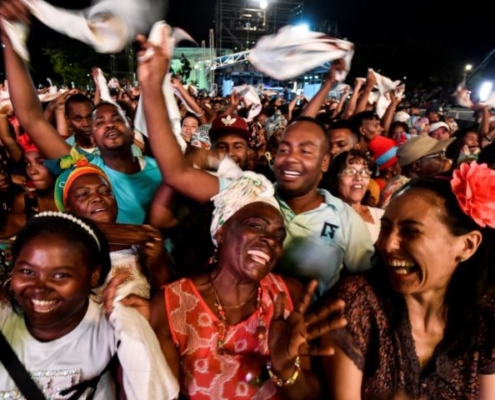Ever since Afro-Colombians arrived in Colombia in the first decade of the 16th century, they have been considered a minority group by the Colombian government, which has exposed them to discrimination and inequality. Many advocacy groups, including the National Association of Displaced Afro-Colombians (AFRODES) or Chao Racismo, as well as various Afro-Colombian activists, have come together to fight for this ethnic group’s rights. However, Afro-Colombians continue to protest for their rights and demand equality between themselves and all non-Afro Colombians in certain social aspects. Social issues concerning Afro-Colombians range from socio-economic inequalities to physical violence and other forms of inequality and discrimination.
Educational disparities in Afro-Colombian life
There is an acknowledgment that there is a subtle racist undertone in Colombia. There is a lack of implementing the history of Afro-Colombian culture, language, and overall visibility within Colombian educational hubs. Even so, their history is not told correctly to the Colombian people. It is recorded that the African slaves that entered throughout the 15th to 18th century were not given their freedom by the republic but by their own accord. During religious festivals and other days, slaves were permitted to work for their profit.
Then, they would save up their money to buy their freedom. This marked the beginning of Afro-Colombians and their relationship with Colombia. In 2007, the Colombian national government implemented a new section in the government for Afro-Colombians called “la Comisión Intersectorial para el Avance de la Población Afrocolombiana, Palenquera y Raizal.”
This sector was intended for the advancement of the education of Afro-Colombians. Not only this but the Colombian government had also conducted specialized studies and 18 workshops across the cities of Colombia. Due to this, about 4000 Afro-Colombian community leaders came together to write recommendations to the government by May 2009.
However, after many years none of the strategies have worked and Afro-Colombians still lack the same opportunities as their whiter Colombian counterparts. The Colombian government has tried to help the Afro-Colombian people by creating more programs to further the education of Afro-Colombians past high school. The main program is the “Admisión Especial a Mejores Bachilleres de la Población Negra, Afrocolombiana, Palenquera y Raizal” which gives admission to about 200 Afro-Colombians per semester into the National Colombian University. This program can be compared to affirmative action in the United States, once again highlighting the imbalance of opportunities for Afro-Colombians.
The Ministry of Education has attempted to make recommendations on the subject of the background and history of Afro-Colombians when teaching Colombian history. In hopes of incorporating more Afro-Colombian history, the ministry of education plans to add Afro-Colombian history on exams of the state.

